The right condiment can transform a simple dish into a standout culinary experience. For many people living abroad, condiments don’t just add flavor—they offer a taste of home. A drizzle of chili oil or a spoonful of chimichurri can bring comfort and connection, even when you’re far from family traditions.
Every region has its go-to condiments, reflecting unique culinary traditions, agricultural roots, and cultural values. Exploring them can help you discover new flavors in your adopted country while reminding you of the familiar tastes you grew up with.
In this Remitly guide, we’ll explore the most popular condiments in every region. You’ll learn their origin stories, cultural significance, and flavor profiles—and maybe get a few ideas for using them in your own kitchen.
Asia’s most loved flavors
Asian cuisine is diverse and complex, but one common thread ties it together: balance. Flavors like salty, sweet, sour, spicy, and umami layer together to create harmonious blends. Fermented condiments add depth and savoriness, and you can use them to bring a taste of home to noodles, dumplings, curries, and stir-fries.
Soy sauce (East Asia)
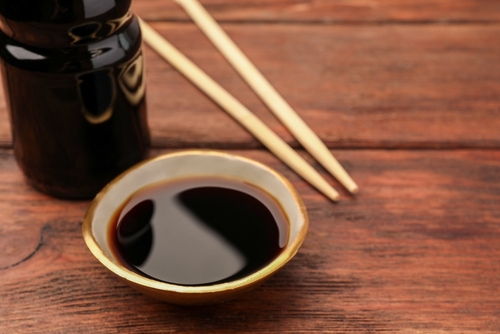
Soy sauce is one of the world’s oldest condiments, dating back over 2,500 years to ancient China. Made by fermenting soybeans and wheat in brine, it delivers a salty, umami-packed punch essential in East Asian cooking—flavoring sushi in Japan, noodles in China, and bulgogi in South Korea.
The savory richness of soy sauce makes it a versatile staple you can use in marinades, dipping sauces, or stir-fry bases.
Fish sauce (Southeast Asia)
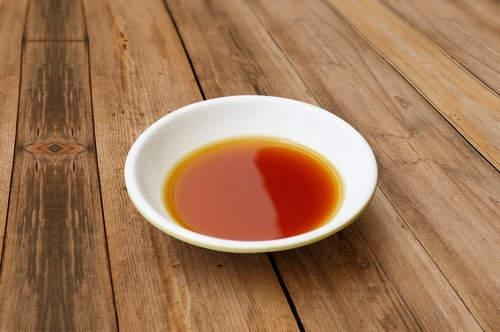
Fish sauce is at the heart of many Southeast Asian recipes. Combining salt, fermented small fish—typically anchovies—and water creates this tasty sauce, which adds a pungent, savory kick to any dish. The unique taste defines popular regional foods like Vietnamese pho, Thai Pad Thai, and Cambodian Amok.
Despite its strong smell, fish sauce blends seamlessly into soups, stews, stir-fries, marinades, and dips, adding depth without overpowering flavors.
Chili oil (China)
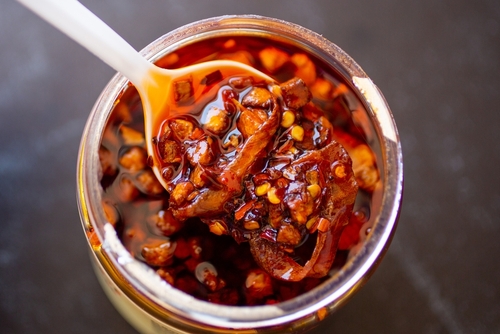
What do you get when you infuse neutral-flavored oil with Sichuan peppercorns, dried chili flakes, sesame seeds, and your preferred spice blend to taste? Chili oil brings the heat and smokiness, and it’s a beloved drizzle for dumplings, noodles, and stir-fries.
Chili crisp, a crunchy, fiery variant, has gained global popularity thanks to TikTok, with brands like Lao Gan Ma and Fly By Jing developing cult followings.
You can make a jar of homemade chili oil or chili crisp to capture their authentic taste.
America’s must-have toppings
In the US, condiments often bring sweetness, tang, or spice to familiar comfort foods like fried chicken, hamburgers, and classic barbecue. They’re affordable, easy to find, and ready to use, making them staples in nearly every American fridge.
Ketchup (the US)
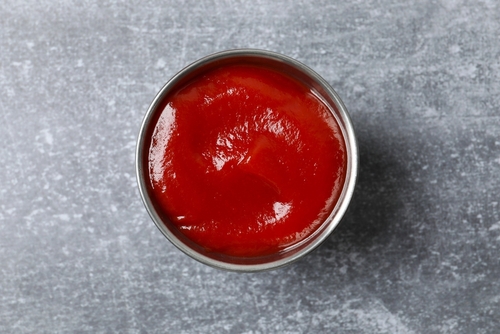
With its sweet, tart flavor, ketchup is the go-to condiment for burgers, fries, and hot dogs. Most people don’t know that its origins trace back to a Chinese fermented fish sauce called “kê-tsiap”. However, the American, tomato-based version emerged in the 19th century and quickly became a household staple.
You’ll find ketchup in nearly every US household. It’s familiar and versatile, even if the sweetness takes some getting used to.
Hot sauce (Southern US)
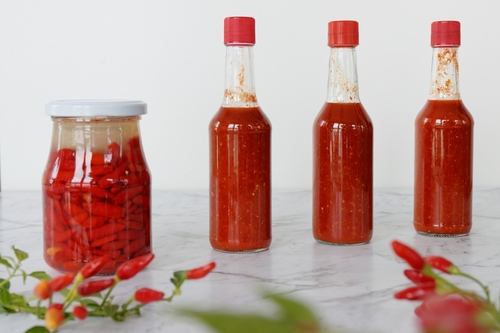
From Tabasco in Louisiana to Texas Pete in North Carolina, hot sauce is a Southern culinary treasure. Made from chili peppers, vinegar, and salt, it adds heat and tanginess to everything from fried mac and cheese to gumbo.
For many US immigrants, hot sauce is familiar because versions of it exist across the globe. It’s a reminder that spicy, peppery food transcends borders. This widespread popularity is reflected in the $1 billion USD American hot sauce market, showcasing the country’s enduring love for savory heat.
Mustard (the US)
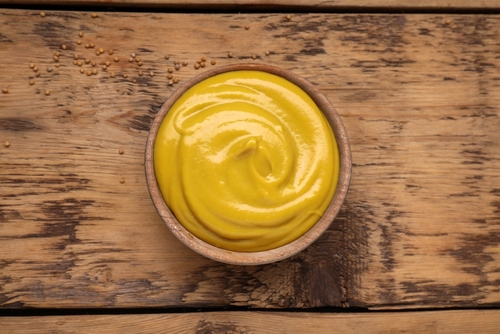
Introduced by European settlers, mustard quickly adapted to local tastes. Today, it’s a staple in American cookouts.
The classic neon yellow mustard—introduced at the 1904 World’s Fair—is a mild-tasting relish, perfect for sandwiches and ballpark hot dogs. Beyond the grill, it adds flavor to marinades, barbecue sauces, and salad dressings. But if you want a sharper bite, Dijon mustard delivers tangy depth to dressings and simple sandwiches.
Europe’s elegant enhancers
European food culture leans heavily on tradition, craftsmanship, and seasonal ingredients. While each country has its own hallmark flavors, condiments in Europe are often used to emphasize richness and freshness. This approach elevates both simple and refined dishes, transforming them into something special.
Mayonnaise (France)

Creamy, full-bodied, and endlessly versatile, mayonnaise as we know it originated in France in the 18th century. You’ll find it tastes great spread on sandwiches, mixed into potato salad, or transformed into garlic aioli.
Grab a jar at the nearest store, or whip up a homemade version with egg yolks, mustard, oil, and vinegar to enjoy a simple comfort that feels distinctly French.
Pesto (Italy)
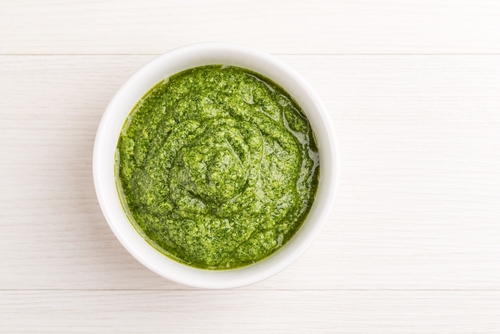
Pesto blends fresh basil, pine nuts, garlic, Parmesan, and olive oil into a bright, herby sauce, ideal for pasta, sandwiches, or even pizza drizzles.
“Pesto alla Genovese” from Liguria carries a protected designation of origin (PDO) status in Europe. However, variations reflect key regional ingredients, such as walnuts, arugula, and sun-dried tomatoes. For example, in Sicily, you’ll find pistachio pesto, or “Pesto all Trapanese”, made with tomatoes and almonds.
Vinegar (the UK)
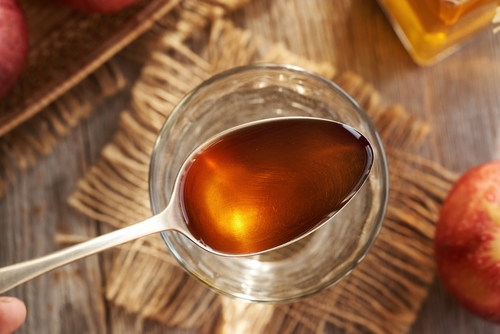
In Britain, you can’t have traditional fish and chips without malt vinegar, but its uses extend further. It brightens roasted vegetables, pickled foods, and salad dressings, adding a sharp bite that offsets heavier flavors.
For expats, a splash of malt vinegar can instantly evoke the taste of a local pub, the aroma of a fish and chip shop, or a hearty Sunday roast.
Latin America’s zesty staples
Latin American cuisine bursts with color and heat, built on fresh produce, bold chilies, and aromatic herbs. From Mexico’s vibrant street food to Argentina’s smoky “asados”, the region embraces foods that bring brightness, spice, and depth. Condiments are often as essential as the main dish, turning every bite into a celebration.
Salsa (Mexico)
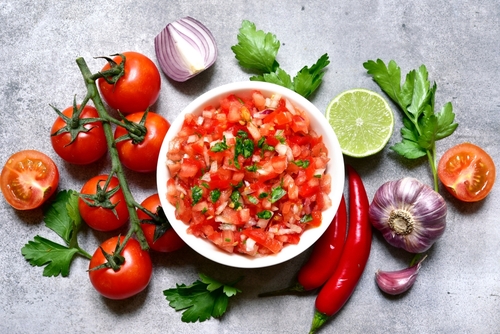
Few condiments are as diverse as Mexican salsa. Rooted in Aztec, Incan, and Mayan culinary traditions, salsa literally means “sauce”, and its variations are nearly endless.
- Salsa verde (made with tomatillos and green chilies) delivers freshness to tacos and enchiladas.
- Salsa roja (made with red tomatoes and dried chiles) offers smoky, earthy notes.
Chimichurri (Argentina)
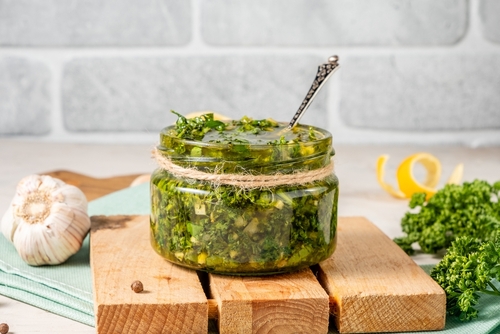
In Argentinian cuisine, condiments play a key role in the country’s popular barbecue tradition—or asado. Made with fresh parsley, garlic, oregano, vinegar, and chili flakes, chimichurri was made to accompany smoky cuts of beef grilled over wood fires.
Unlike many sauces, chimichurri is always served fresh, spooned generously over fired steaks, sausages, and chicken. You can even make it at home to stay connected to Argentina, even from afar.
Aji (Peru)
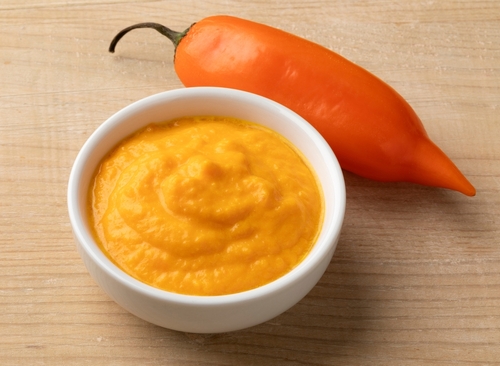
Peruvian cuisine revolves around one essential pepper: aji amarillo. This golden-yellow chili has a medium heat level and a fruity, citrusy flavor that defines Peruvian condiments. Aji sauce blends these peppers with garlic, lime juice, and herbs, creating a vibrant sauce served with street foods like “pollo a la brasa” (roasted chicken) or “empanadas” (meat turnovers).
Variations of this condiment exist across Peru. For instance:
- Coastal areas use more lime and cilantro.
- In highland regions, cheese or nuts are added for thicker, creamier sauces.
Africa’s unique spice mixes
African cuisine pays homage to fresh ingredients, spice, and resourceful cooking traditions shaped by geography and trade. From West Africa’s aromatic spice blends to South Africa’s “braais”, flavors lean toward the bold, fiery, and complex. Condiments here are used to ensure warmth and intensity, often transforming simple ingredients into unforgettable meals.
Harissa (North Africa)
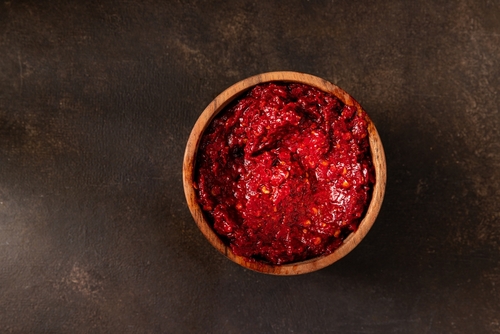
Harissa originated in Tunisia but spread throughout North Africa, becoming a staple in Moroccan and Algerian kitchens, too. Made from dried chilies, garlic, and spices mixed with olive oil, its deep red color and smoky, fiery flavor bring warmth to couscous, tagines, and roasted vegetables. In Tunisia, harissa is so central to culinary traditions that it’s usually served with bread as a starter, much like butter or olive oil in the US.
Peri-Peri sauce (South Africa)

Peri-peri sauce combines African bird’s eye chilies, vinegar, and lemon. Introduced to Mozambique by Portuguese traders in the 15th century, locals adapted the recipe to use readily available ingredients like garlic. This fiery, tangy sauce has become a hallmark of South African cuisine, often brushed over flame-grilled chicken.
Popularized worldwide by fast food chains like Nando’s, peri-peri is now a familiar flavor that’s easy to find. It remains deeply tied to the country’s grilling traditions, a tangy complement to smoky meats.
Chutney (South Africa/India)
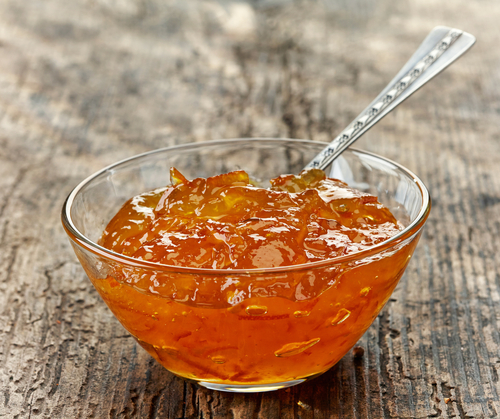
Chutney started in India as a sweet-spicy preserve of fruits and spices. Indian migrants then brought it to South Africa, where it’s a beloved staple today. This version is made with peaches and apricots, providing a sweet-spicy balance that pairs well with curries, sandwiches, and roasted meats.
Australia and New Zealand’s favorites
While sharing British culinary influences, Australia and New Zealand have developed unique local flair and distinct flavors over time. From salty spreads to tangy sauces, these condiments reflect both colonial history and modern creativity, uplifting fresh, local ingredients in everyday cooking.
Vegemite (Australia)
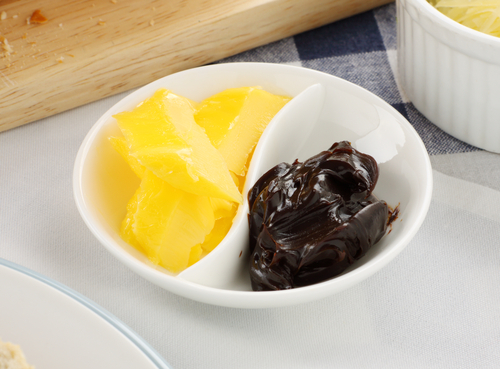
Vegemite sparks strong opinions: some love it, some just don’t. But for many Aussies abroad, it’s a nostalgic taste of home. Made from leftover brewer’s extract, this dark, salty spread has been a breakfast staple since it was introduced in the 1920s as an Australian-made alternative to British Marmite. It’s typically enjoyed spread thinly on toast and is packed with umami and B vitamins.
Beetroot relish (Australia/NZ)
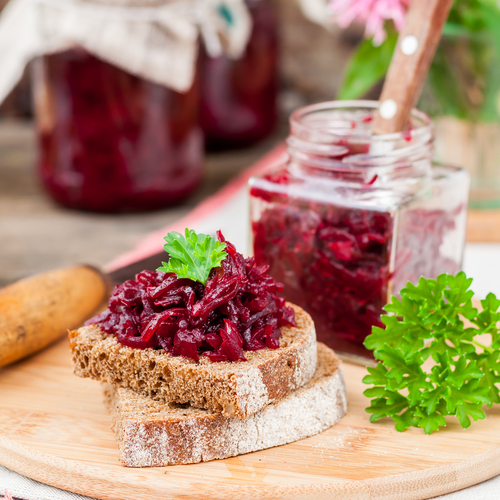
Beetroot is a popular ingredient in both Australia and New Zealand, famously used as a topping on Aussie-style burgers. Beetroot relish offers a sweet, earthy contrast to savory meats and cheeses, reminding many Kiwi and Aussie expats of family meals and backyard gatherings. Even a small dollop on your sandwich or cheese board can evoke comforting flavors.
BBQ sauce (Australia)
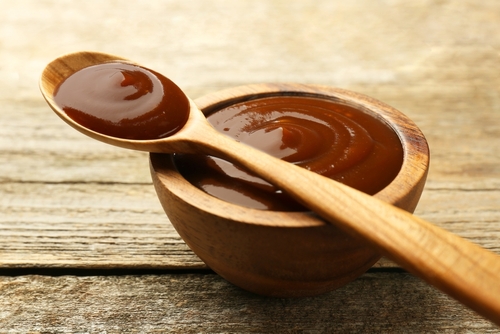
While barbecue sauce is beloved worldwide, in Australia, it’s a must-have at backyard cookouts. Typically less sweet than American versions, Australian BBQ sauce has a tangy, smoky profile that makes it a favorite for sausage sizzles—a national tradition of grilled sausages served on bread.
For those far from Australia, this BBQ sauce can bring the authentic taste of home to any grilled meal, making even weeknight dinners feel a little more celebratory.
Why condiments connect us
Condiments are more than flavor boosters. They carry stories, memories, and connections to home. For many living abroad, a familiar sauce or spread can offer the simple reminder that distance doesn’t erase tradition.
Exploring the most popular condiments in every region lets you discover new flavors. A spoonful of something different just might become part of your own culinary tradition.
FAQs
What are condiments, and why are they important?
Condiments are sauces, spreads, or seasonings that add flavor, texture, and depth to dishes. They reflect cultural identity and elevate even the simplest meals.
Which region has the most diverse condiments?
Asia likely takes the crown, thanks to its long history of fermentation and spice use. The region is well-known for producing everything from soy sauce to chili oil.
What condiment is considered a global favorite?
Ketchup is one of the most universally recognized condiments. It’s found in millions of homes and restaurants worldwide.
Are condiments healthy?
It depends. Some condiments, like pesto or chimichurri, utilize fresh nutrients and healthy fats, while others may contain higher levels of salt or sugar, so a little goes a long way.
How can I incorporate regional condiments into my cooking?
Start small. You can add harissa to your soups, spoon chimichurri over your steak, or drizzle chili oil on a fried egg. Experiment to find combinations you love.